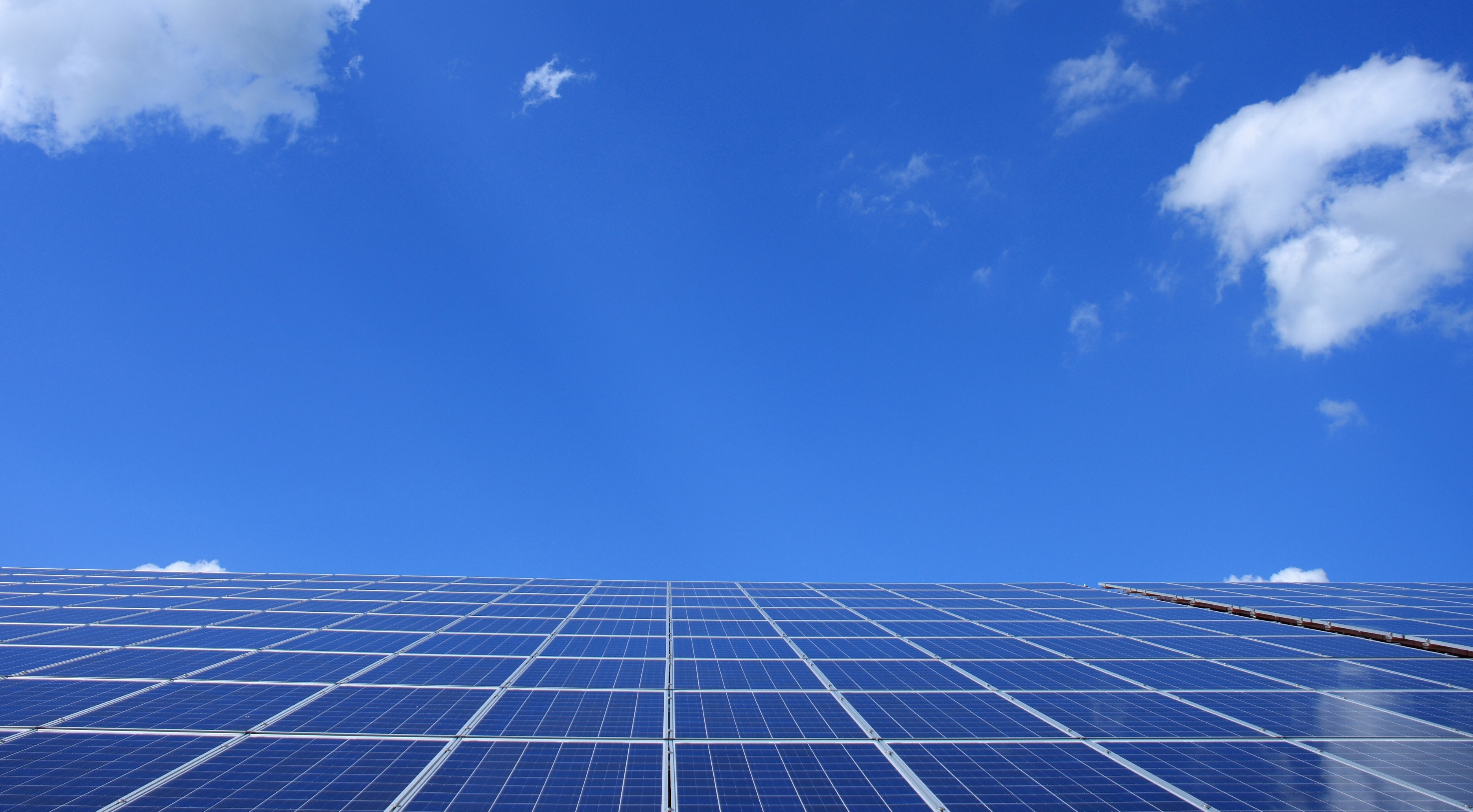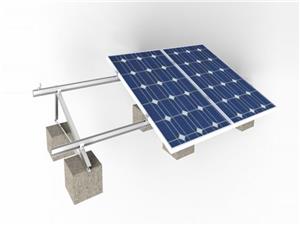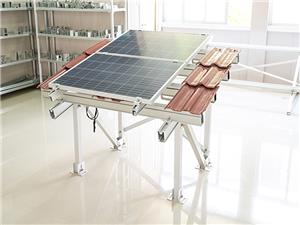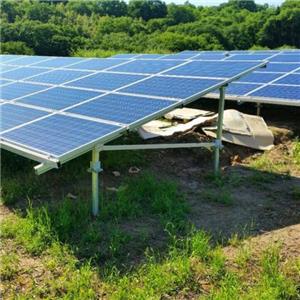Water and sunlight complementary "have 4 big problems to be worth paying attention to.
Making full use of the advantages of terrain and water resources, and complementing multiple renewable energy sources can create more benefits,such as water energy and solar photovoltaic enengy complementing.

National energy bureau released in August of this year the National Energy Administration of the National Development and Reform Commission to carry out the "landscape water storage integration" "source network charge storage integration" guidance (draft) "is put forward, hydropower base stock can be combined with sending water and electricity, new energy characteristics of output, and given space end system conditions, the study of baling near the" integration "implementation plan of the new energy power.
water-solar complementary power generation is one of the main forms of "integration of wind,solar,water,fire and storage". At present, related project planning or preliminary work has been carried out in southwest China.
In March, Yunnan province proposed to promote the construction of 3 million kilowatts of photovoltaic power in a scientific and orderly manner, and intended to lay out water-sunlight complementary power generation projects in Chuxiong and other areas with good lighting resources.
At the end of June, the General Department of the National Energy Administration issued the Notice on the Announcement of the Results of the National Subsidy Bidding for photovoltaic power generation projects in 2020, indicating that the 1.2 million kW water-solar complementary photovoltaic power generation projects in Guizhou and 100 million kW in Guangxi would be included in the list of national subsidy bidding for photovoltaic power generation projects in 2020.
The scientific promotion of water-solar complementary power generation is a great significance to promoting the high-quality development of renewable energy, improving the operation efficiency of the power system, and promoting the green and low-carbon transformation of energy.
The reliability and stability of water-solar complementary power generation have been improved obviously.

Water-solar complementary power generation is to make full use of the existing transmission line channels and hydropower units' rapid adjustment capacity of hydropower station to send photovoltaic power generation and hydropower units' electricity together in bundles, so as to improve the utilization rate of line channels, reduce the influence of photovoltaic power generation volatility and reduce system reserve.
Water - light complementary power generation control mainly includes AGC and AVC control.
Among them, AGC control is to realize the automatic regulation of active power and frequency on the premise of ensuring the safe and reliable operation of hydropower units and photovoltaic power generation equipment, and comprehensively considering factors such as photovoltaic power generation output prediction, reservoir dispatching, hydropower unit operating conditions and consumption characteristics.
The control principle is to treat the photovoltaic power station as an unadjustable unit of the hydropower station. Through the rapid adjustment of the hydropower unit, the photovoltaic power output fluctuation can be smoothen to meet the demand of photovoltaic power generation and ensure the total output meets the requirements of dispatching and control.
In addition, AGC control sets the combined vibration zone and action threshold of hydropower units to ensure that the output of hydropower units is within a reasonable range and reduce the number of adjustments increased due to the frequent fluctuations of photovoltaic.
AVC control realizes the automatic control of reactive power and voltage jointly by coordinating the reactive power compensation device of photovoltaic power station and the reactive power regulation capacity of hydropower unit.
According to voltage or reactive power control instructions, the system gives priority to the photovoltaic power station reactive power compensation equipment, and then adopts hydropower units to participate in reactive power regulation under working conditions that are difficult to meet the requirements, so as to improve the operational reliability and stability of hydropower units.
At present, the development of water - light complementary power generation needs to pay attention to four problems
Despite the obvious advantages of water-solar complementary power generation, there are still many problems worth attention.
One is the ratio of water light capacity.
Water-solar complementary power generation can reduce the influence of direct photovoltaic grid-connection on the system, but also reduce the regulating ability and operation flexibility of hydropower units.
Therefore, the reasonable ratio of water-light capacity is the key to give full play to the advantages and functions of water-light complementary power generation.
Photovoltaic power generation capacity should be determined as a whole based on land resources, environmental protection, river basin navigation and flood control requirements, combined with reservoir capacity, hydropower unit regulation performance, power consumption space, load characteristics, system peak regulation demand and delivery channel capacity and other conditions.
In addition, in the complementary control system, the setting of parameters such as the combined vibration area of hydropower units should be matched with the photovoltaic power generation capacity, so as not to affect the operation effect of water-light complementary power generation.
Second, consumption and access system.
Large and medium-sized hydropower stations in southwest China are mainly connected with 220kV and above voltage levels, and power generally needs to be transmitted to load centers for consumption over long distances.
For the photovoltaic power station access system, it is necessary to first analyze and clarify the direction of power consumption, and demonstrate in detail the necessity of direct bundling and delivery of photovoltaic power stations with large and medium-sized hydropower stations.
If the near area has absorption space and delivery conditions, the photovoltaic power station should be connected to the surrounding sites through low voltage grade.
If there is no absorption space or no delivery conditions in the adjacent area, after full technical and economic comparison of various delivery schemes, photovoltaic power stations can be recommended to be connected to the booster station of the hydropower station with high voltage level, and sent out by bunding through the existing lines of the hydropower station.
The third is to coordinate with the conventional power supply.
The large-scale development of photovoltaic power generation in the form of water and solar complementation will crowd out the power space of conventional power supply, leading to inefficient operation of some units and intensifying interest conflicts among power supply enterprises.
As the auxiliary service mechanism of the power market is not yet perfect, if the basic supporting role of the conventional power supply is weakened, the security and stability of the power system will be affected.
Therefore, it is necessary to coordinate the development of water and light complementary power generation and conventional power supply.
Fourth, the impact on power grid operation.
Large-scale photovoltaic grid connection in southwest China will continue to exert pressure on power transmission sections in southwest Guizhou, northwest Guizhou and northwest Yunnan.
As a large number of power electronic components are connected to the system, new problems such as reduced moment of inertia, insufficient short-circuit capacity support and sub-synchronous resonance may be caused, which will affect the safe and stable operation of the power grid.
To strengthen the quality development of water and sunlight complementarity, we must make efforts from three aspects
In view of the above problems, it is suggested to strengthen coordination in planning, take into account the needs of all parties, and promote the high-quality development of water-sunlight complementarity.
First of all, we will carry out a unified planning for large and medium-sized water-sunlight complementary power generation in the southwest region, and promote the joint participation of land, environmental protection, water conservancy, power supply and power grid, so as to achieve multi-objective synergy by taking into overall consideration resource conditions, environmental protection, flood control and navigation, power consumption and delivery, peak load regulation of power grid and security and stability.
At the same time, improve the technical standards, standardize the management system.
Suggestions combined with the power system security and stability of guideline, hydropower station, and photovoltaic power station design specification requirements, reservoir scheduling management regulations and technical standards for large and medium-sized above the complementary photovoltaic power generation project, clear above the complementary reasonable permeability, send check and dispatching operation principles and requirements, such as strengthening the planning, design, construction and operation of normative management.
In addition, we need to improve the market mechanism and promote coordinated development.
Southwest China is under great pressure to purchase renewable energy power with full guarantee, and the market value of new energy power generation has not been fully reflected.
It is suggested to adhere to the principle of marketization, actively promote the participation of new energy generation in market transactions, accelerate the construction of auxiliary power service market, promote the coordination of source and network, and promote the high-quality development of water-sunlight complementary power generation.




